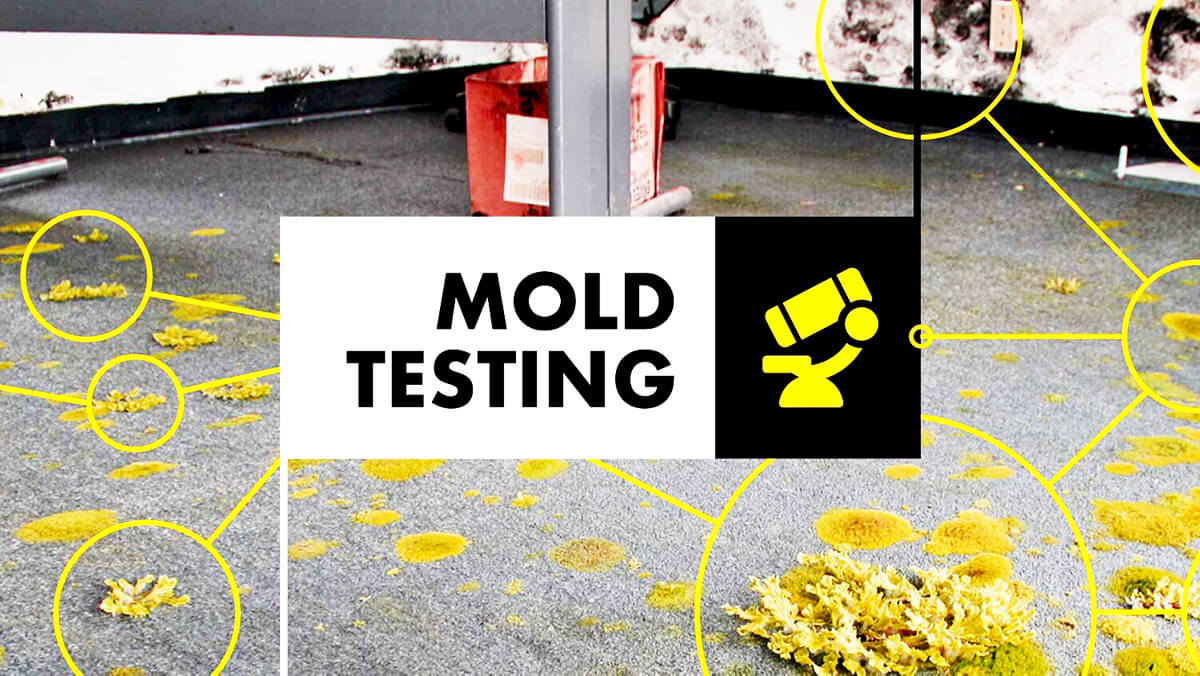Can your environment make you sick? A visibly clean home or business can have surprisingly poor air quality. Mold testing is the gold standard in determining the true impact of past or hidden water damage. The best way to evaluate your air quality or a mold problem is to call the experts at DryHero in Lincoln, Nebraska. Many of your questions can be answered by phone where professional advice regarding your specific situation will be provided.
Mold Is Indoors and Outdoors
Mold contamination can be found indoors and outdoors, and is often identified visibly during a simple inspection of your property. However, it’s possible to have high levels of “airborne” mold in your home or business that is not visually detectable. That’s because mold can come into your home in many ways, including through open doors and windows, vents, and heating/cooling systems. Mold can also collect on clothing and shoes, and on your pets, allowing the mold inside your home or business.
Mold spores can drop on places with excessive moisture where mold can grow, such as on roofs, pipes, walls, plant pots, or where flooding has occurred. Many building materials, including paper and paper products, cardboard, ceiling tiles, and wood and wood products, provide the right ingredients to promote mold growth. Other materials such as dust, paints, wallpaper, insulation materials, drywall, carpet, fabric, and upholstery, commonly support mold growth. DryHero in Lincoln, Nebraska has trained professionals experienced in designing mold sampling protocols, sampling methods, and interpreting results that determine where the mold is located and the extent of mold that is present.
Increased Mold Awareness
Molds are very common in buildings and homes. The most common indoor molds are Cladosporium, Penicillium, and Aspergillus. We do not have precise information about how often different molds are found in buildings and homes.
The awareness of mold growth in buildings has risen greatly in recent years, along with the increased occurrence. Factors contributing to this increase in mold growth include energy conservation measures, inferior building materials, modifications in building products, fast-track construction techniques, failure of occupants to properly mitigate moisture intrusion and an increased reliance on mechanical heating and cooling for comfort.
Since professional indoor air quality (IAQ) organizations, state governments, and the U.S. Environmental Protection Agency (EPA) have not agreed upon threshold exposure limits or levels of visible mold growth that constitute a concern for occupant and worker safety, assessing individual mold and air quality concerns can be quite challenging. Quantifying visible levels of mold growth alone has obvious limitations because it does not take into consideration hidden or concealed mold growth and contamination resulting from settled spores (not visible) that were dispersed from areas of actual growth. The IAQ and mold remediation industry are constantly evolving.
You can usually see where you have a mold infestation in your home or business. There may also be a distinct odor that you can smell that will also indicate mold is present.
Exposure to Mold May Cause Health Issues
Exposure to moldy environments may cause a variety of health concerns for some people, and none for others. Allergic reactions to mold are common, and can be immediate or delayed.
-
Inhaling or touching mold or mold spores may cause allergic reactions in individuals sensitive to molds.
-
Molds can cause asthma attacks in people with asthma. Studies have suggested a potential link of early mold exposure to the development of asthma in some children, particularly those who may be susceptible to developing asthma.
-
People with immune suppression or chronic lung diseases, including chronic obstructive pulmonary disorder and asthma, may experience difficulty breathing or infections in their lungs from mold.
-
In workers exposed to large amounts of molds in occupational settings, such as farmers around wet hay, severe reactions may include fever and shortness of breath.
There is no blood test for mold. Some physicians can do allergy testing for possible allergies to mold, but no clinically proven tests can pinpoint when or where a particular mold exposure took place. If you suspect you have been exposed to molds, you should discuss your concerns with your healthcare provider.
If you feel your home or business is making you or your employees sick, we urge you to have it inspected and the air quality evaluated by one of DryHero’s seasoned restoration and remediation professionals. We’ll even go one step further in putting your mind at ease when it comes to addressing air quality and mold issues in your home or business. DryHero in Lincoln, Nebraska offers free, on-site mold assessments during normal business hours. Give us a call at 402-438-2379.


